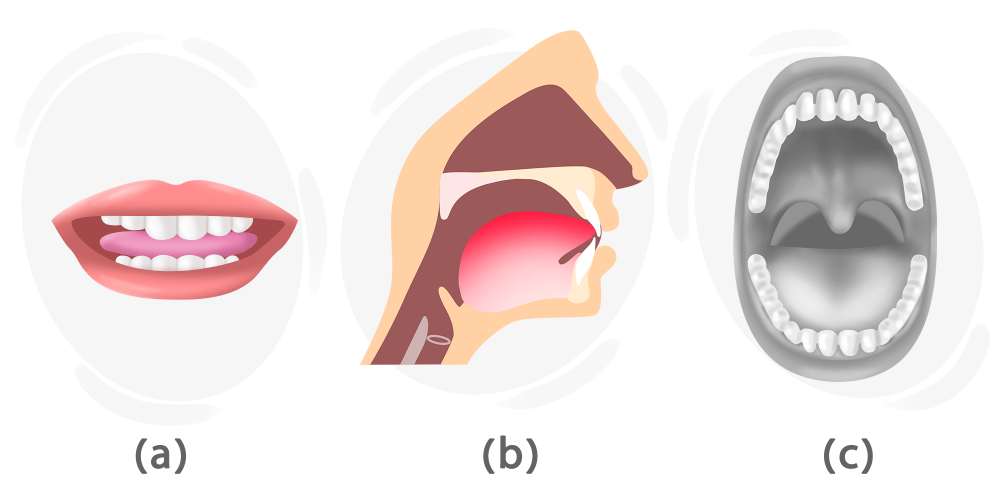How to Pronounce the /θ/ Sound



In this lesson, we are going to delve into the production of the /θ/ sound using the appropriate articulatory organs.
What Type of Sound Is /θ/?
/θ/ is a consonant sound in the English language.
How to Produce /θ/?


As you can see in picture (b), the tongue is important here. The tongue is raised a bit, its tip placed just behind the upper front teeth. The uvula has stopped the air from going to the nose, so the air comes out of the mouth from the sides. Also, pay attention that this sound is voiceless because the circle in the throat is grey. So, we do not vibrate our vocal cords.
As you can see in picture (a), the teeth and the lips are parted. If you want to practice step by step, try to put the tip of the tongue between your teeth. Then as you make progress, you can slowly pull your tongue back in and place it just behind your upper front teeth.
As you can see in picture (c), the tongue does not make contact anywhere in the mouth. So, nowhere is highlighted. It might come in handy to know that some native English speakers tend to stick their tongues out a bit when they pronounce this sound. You can use this to help you produce the sound. As you make progress, try to pull your tongue back in.
Which Letters are Pronounced as /θ/?
The sound /θ/ is represented by the following letters:
th:
thorough /θɜroʊ/
thermometer /θərˈmɑmɪt̬ər/
thrash /θræʃ/
thirst /θɜrst/
Warning!
Careful not to mistake /θ/ with /ð/. /θ/ is voiceless whereas, /ð/ is voiced. Compare:
wealthy /wel.θi/
though /ðoʊ/
Tip!
If you do not have this sound in your native language, you can pronounce it like /t/. However, this can be applied to some words like "think." Note that if you pronounce /θ/ like /t/, in words like "three," it will be mistaken for "tree."
/θ/ Sound in the Most Common World Languages
As you can see in the table below, the /θ/ sound is not common in most languages. Only Spanish, Italian, Arabic, and Greek have this sound. There is no need to worry though. With all the information above and a little bit of practice, you can easily produce it like a native speaker. Look:
Existence | Example | |
|---|---|---|
Mandarin | x | - |
Spanish | ✔ | cazar |
Hindi | x | - |
Bengali | x | - |
Portuguese | x | - |
Russian | x | - |
Japanese | x | - |
Vietnamese | x | - |
Turkish | x | - |
French | x | - |
German | x | - |
Italian* | ✔ | capitan |
Persian | x | - |
Standard Arabic | ✔ | ثَوْب |
Korean | x | - |
Indonesian | x | - |
Filipino | x | - |
Hungarian | x | - |
Dutch | x | - |
Polish | x | - |
Romanian | x | - |
Swedish | x | - |
Czech | x | - |
Greek | ✔ | θάλασσα |
Ukrainian | x | - |
Urdu | x | - |
* The sound is regional or non-native.
Listening
Below, there is an audio file that helps you learn the proper pronunciation of the /θ/ sound:
Comments
(0)